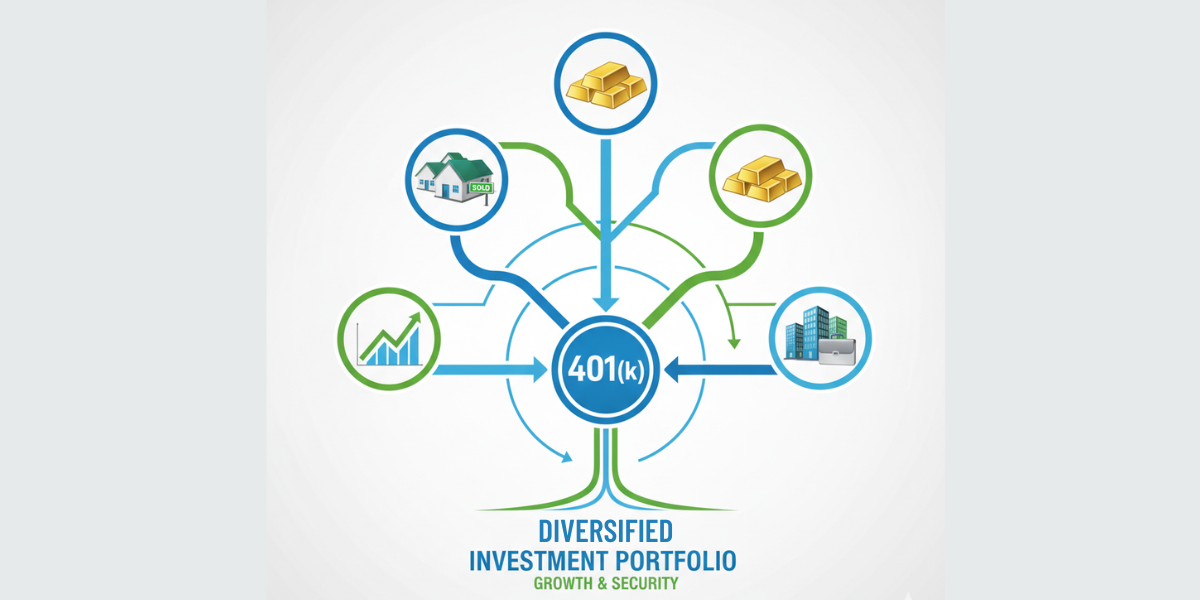Want to learn Retirement Planning Beyond a 401(k) ?
It’s time to explore Self-Directed IRAs, Solo 401(k)s, Roth accounts, and more flexible ways to grow wealth.
Retirement Planning Beyond a 401(k) Key Takeaways:
- Your 401(k) is a good start, but you shouldn’t rely on it alone for your retirement planning.
- Saving beyond your 401(k) can help you diversify, stay flexible, and plan taxes better.
- Tools like Self-Directed IRAs, Solo 401(k)s, and Roth accounts give you more control.
- Mixing different savings strategies helps you balance growth and safety.
- Reviewing your plan regularly keeps your retirement goals on track.
Saving for retirement doesn’t stop at your 401(k). Once you’ve contributed as much as you can there, it’s smart to look at other ways to grow your money. Exploring new retirement planning options can give you more flexibility, better tax planning, and even new opportunities to build long-term wealth.
Why Saving for Retirement Beyond Your 401(k) is a Good Idea: Prime Benefits!
Short answer: Because one account can’t do it all. A 401(k) gives you a great foundation, but it also limits your choices. Looking beyond it helps you create a stronger and more flexible retirement strategy.
- Diversification
You run a greater risk when all of your money is in one kind of account. You can offset market fluctuations by diversifying your investments across a variety of assets, such as mutual funds, real estate, and even private lending. It’s similar to not putting all of your eggs in one basket.
- Adaptability
The majority of conventional 401(k) plans only offer a small number of investment choices. This implies that the performance of the market affects your growth. For instance, you have the freedom to select investments that make sense for you with a self-directed IRA. You could use one account to invest in small businesses, real estate, and gold.
-
Mobility
Frequently switching jobs? Your 401(k) may remain with your previous employer each time you move. It can be challenging to manage several accounts. However, you can make it simpler by consolidating these accounts into a single IRA account wherever you go.
-
Tax Preparation
Tax laws vary depending on the account. While some (like Roth IRAs) let your money grow tax-free, others let you postpone taxes until retirement. By doing savings beyond a 401(K) and combining them, you gain more control over how and when you pay taxes in the future.
- Estate Planning
Thinking about estate planning is important and how your money and assets will be distributed when you die, ensuring that you can limit any taxes and pass on the maximum value to your loved ones.
What are the Best Strategies to Save for Retirement Beyond Your 401(K)?
Here are some wise tactics to consider if you are prepared to expand your retirement planning. You can grow and safeguard your savings in various ways with each approach.
- Use a Self-Directed IRA to Diversify
The main distinction between a self-directed IRA and a traditional IRA is that you have more control over where your funds are allocated. Depending on your comfort level, you can invest in private businesses, real estate, or even cryptocurrency.
It’s a fantastic way to diversify your risks and take advantage of new opportunities without sacrificing tax advantages.
- Examine a Solo 401(k) That is Self-Directed
A Self-Directed Solo 401(k) might be ideal if you manage a small business or are self-employed. Higher contribution limits result from the ability to contribute as both an employer and an employee. Additionally, just like with a Self-Directed IRA, you have control over your investments.
If you are a business owner and wish to increase your retirement savings more quickly, it’s a flexible choice.
- For Tax-Free Growth, Use Roth Accounts
You can pay taxes on your contributions now rather than later with a Roth IRA or Roth 401(k). Your retirement withdrawals are therefore tax-free. If you expect to earn more in the future or be in a higher tax bracket when you retire, this is a smart retirement planning move. Tax-free income can give you peace of mind down the road.
- Make Real Estate Investments for Consistent Returns
You can build a steady retirement income stream by investing in real estate. You can purchase raw land, commercial space, or even rental homes. Your profits from a Solo 401(k) or Self-Directed IRA can continue to grow tax-deferred (or tax-free in a Roth).
Additionally, real estate gives your retirement portfolio a physical asset that you can see and feel rather than only track online.
- Include a Taxable Investment Account
Retirement accounts have limitations on when you can take money out, even though they have tax benefits. Taxable investment accounts are useful in this situation. When saving for retirement beyond your 401(k), you can invest in stocks, ETFs, or bonds, and take money out whenever you need it.
Although you pay taxes on capital gains, the flexibility can be worth it, especially for short-term goals or early retirement access.
- Use Annuities to Increase Income Security
Concerned about running out of money when you retire? Annuities can provide lifetime income guarantees. You invest a certain amount of money and later receive consistent payments. Think of them as personal pensions.
Annuities help you strike a balance between consistent income and market growth. They are effective when combined with other savings options.
- Remember Health Savings Accounts (HSAs)
You can use a Health Savings Account (HSA) for more than just medical expenses. It can also be used as a covert retirement planning tool. Contributions are tax-deductible, growth is tax-free, and you can take qualified withdrawals for medical costs without incurring taxes.
You can invest and save it for future retirement medical expenses if you don’t use it all up right away.
- Examine and Adjust Frequently
Even the best plans require periodic review. Remember to review your investments at least once a year. Verify that your asset mix still aligns with your objectives and levels of risk tolerance. Events in life, such as getting married, changing jobs, or purchasing a home, can cause your priorities to change.
Rebalancing your retirement planning helps you stay on course and avoid unpleasant surprises later.
When you save for retirement beyond your 401(k), you can choose, adapt, and grow your retirement savings on your own terms. The best part is you don’t need to be a finance expert. All you need is the appropriate direction and a life-fitting plan.
Moreover, you can always consult financial professionals like Calamita Wealth Management if you need help designing a flexible retirement plan!
Author Bio
Donnell Stidhum, Private Pension Plan Consultant and Owner of Self Directed Retirement Plans LLC. Retirement strategist creating properly structured self directed plans providing unrestricted investment control for use in both traditional and non-traditional investments.







